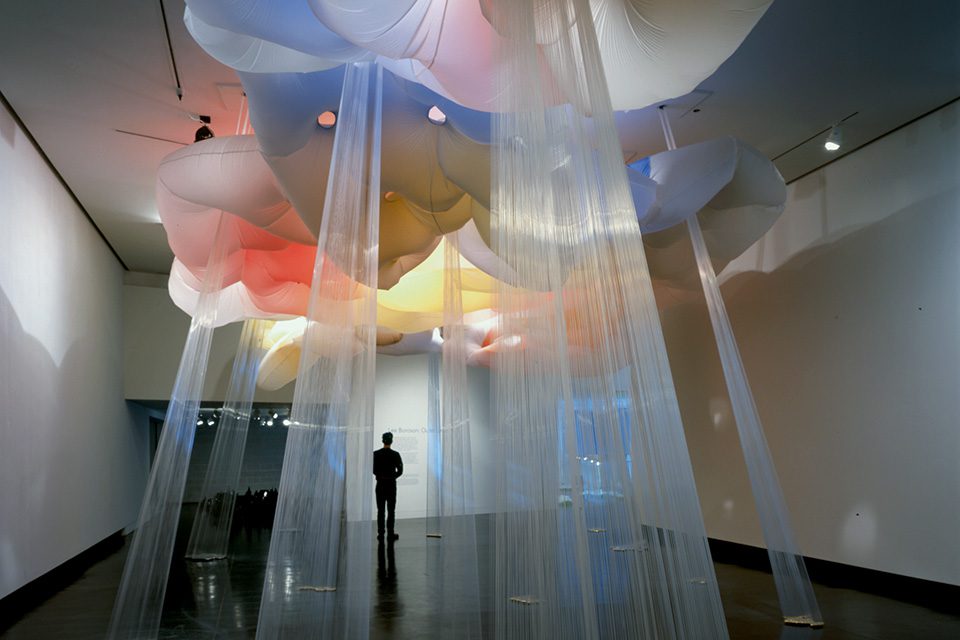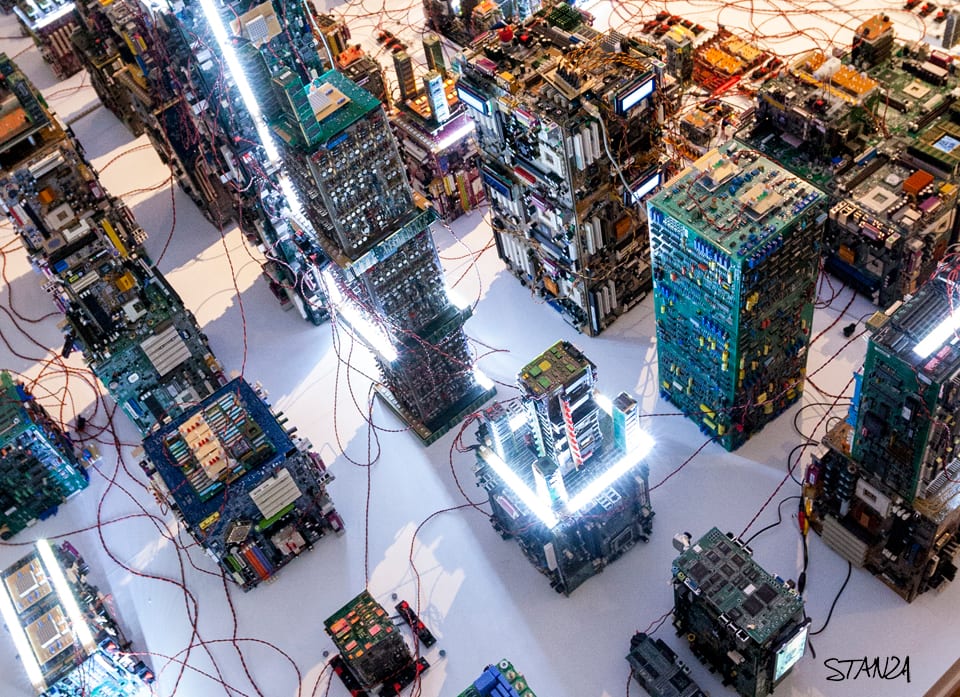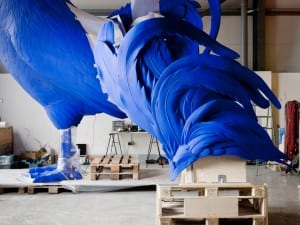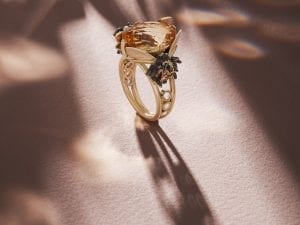A new exhibition of works by the artist Lee Boroson at MASS MoCA explores human representations of the natural world through large-scale sculptural installations.
In the contemporary German philosopher Peter Sloterdijk’s mammoth magnum opus Spheres (1998),he repeatedly comes back to the bubble and the sphere as metaphors for the way we live our lives on the cusp of inner and outer worlds, always absorbed within our inner world while at the same time existing within an outer sphere – the external environment. As an environmentally-engaged philosopher, his comments are prescient not just to an understanding of the concerns underlying contemporary environmental art but also to some of the specific dialogues about the presentation of ecological art either within or outside of the gallery space, where the gallery can be seen as an other sphere, somewhere between the inner and outer spheres. Recent developments in ecological and environmental art have generally resulted in creative work being placed outside of the gallery and into the natural or urban environments. However, as a new exhibition entitled Plastic Fantastic by Lee Boroson (b. 1963) at MASS MoCA reveals, there is a movement within ecologically-engaged sculpture and installation art which explores bringing interrogations of the natural environment back into the gallery with surprising and thought-provoking results. Plastic Fantastic is one of Boroson’s most ambitious projects yet, invoking and recreating four distinct ecological phenomena within the MASS MoCA gallery rooms.
Boroson often works in ways that are site-specific, and the sheer scale of the gallery at MASS MoCA has influenced his approach, resulting in a highly ambitious and large-scale installation. This piece builds on Boroson’s previous works in which he has consistently explored natural phenomena through intricate artificial sculptures. Pieces such as Dewpoint (2003) recreate a particular cloud formation in exacting detail utilising materials such as glass, silicone, felt and wood. The natural world is Boroson’s primary subject, and, in particular, the ways in which humans represent, imagine and interact with it. Boroson is fundamentally interested in our experience of nature as cultured and cultivated, rather than traditional representations of the wild and unmanageable. It is no surprise then that among his research interests is Victorian garden planning, a period when, buoyed by colonial gusto, the imagination and ambition of European gardeners often bordered on, and in many cases exceeded, notions of the bizarre. Boroson borrows the sequential, promenade-oriented organisational principles of many Victorian gardens for Plastic Fantastic, creating a sequence through which the viewer progresses.
The first location the viewer experiences in the exhibition is The Fog. An atmospheric installation of fabric draperies and canopies alongside transparent and translucent forms of sheet plastic, Boroson engineers a number of passageways through the work, which must be traversed with care. Akin to the experience of moving through a thick mist, the installation creates the effect of a haze in which the observer has moments of clarity and moments of deep obfuscation. The piece is disorienting and mysterious, seeming to shift and alter, thus replicating the unpredictability of fog.
However, there is also something profoundly unnatural about the piece. The materials do not themselves look natural per se, rather they are utilised to create the illusion and experience of fog through the careful employment of lighting. In fact, the draperies recall stage curtains more than anything, suggesting the Broadway and Hollywood worlds of make-believe in which many of our notions of the natural world are nurtured and manipulated. Indeed, Boroson’s The Fog distinctly recalls the Stephen King novel and subsequent film The Mist (2007) in which a town is holed up in a supermarket waiting for a deadly fog to subside. King, like Boroson, recognises and exploits our automatic fears of what is hidden or obscured, demonstrating how we are conditioned to respond in certain ways to these natural phenomena.
A notable stylistic device of the works in Plastic Fantastic is what curator Denise Markonish terms “material surrogacy.” Boroson explores how the use of certain materials can come to stand in for natural events. He examines the ways in which our associative mechanisms and brain patterns can adjust to different materials and transform them in relation to the landscape and nature. This is evidenced in The Falls, the second environment in Boroson’s sequential experience: a floor-to-ceiling sculpture in which a constantly spouting stream of reflective and translucent objects is dropped from the top to the bottom in a cyclical motion much like that of a fountain. The objects are shiny and silver, creating the effect of the white froth of a waterfall and also generating an auditory experience of white noise, much like being in the vicinity of a cascade. The material used by Boroson for the objects that are dropped from the ceiling are particularly interesting in an ecological context, given that they are the polypropylene spheres normally used to prevent the evaporation of reservoirs and other large bodies of water. As Markonish explains, this piece “explores the extensively controlled experience of visiting Niagara Falls as a tourist, in which the whole environment has been manipulated and engineered” in order to give the tourist a feeling of what they perceive as the wild and untameable waterfall, while what they are actually experiencing is the massive intervention of human engineering.
In many of his works, Boroson is in dialogue with the Hudson River School, a group of 19th century artists who produced paintings depicting the Hudson River area and the Adirondacks. Notable artists such as Thomas Cole and Frederic Edwin Church attempted to not only depict the landscape but also, in some senses, to directly transmit the experience and atmosphere of being within the natural world through highly expressive paintings of clouds, rivers and woodland. Their works often took imaginative artistic licence over phenomena, as they saw them, and they frequently used impossible natural effects to create the atmosphere of their paintings. In previous works such as Lucky Storm (2004), for example, Boroson realised cloud formations in nylon; impossible rays of sunlight are seen to pour through them. The works of the Hudson painters often gave the impression of awe at the overwhelming forces of nature. Boroson celebrates and continues to test their ideas, while also turning many of the assumptions underpinned their artistic styles on their heads and also exposing some of the ways in which such works condition our attitudes to the environment. While the paintings of the Hudson River School might suggest a natural world that is expansive, limitless and almost divine, Boroson’s works instead explore the impact of humans on an original environment and the ways in which our representations of such an environment are almost always imaginary, engineered and contrived in some way.
The ways in which humans have mythologised the natural world is explored in detail in the following sequential environment, The Crypt. This work comprises an array of inflatable fabric forms that evoke an architectural representation of the underworld, both in the literal sense of merely being below ground level and in the more mythic and cryptic sense of entering the realm of the dead. By referencing gothic elements and the sorts of crypt spaces which are found in cathedral buildings, Boroson creates the effect of a subterranean, primordial chamber into which we are drawn to contemplate mortality. However, he also draws attention to the ways in which these ideas are human interpretations and imaginary projections on what are, in fact, underground caves and caverns. This piece, which is somewhat ironically situated on a mezzanine floor, combines a sense of the earth’s own architecture with an extensively reimagined mythological environment.
Above all, Boroson’s work seems to remind us of how many leaps and hops of intellect we make when encountering the natural world. In his essay Experience and its Objects (2005), he writes that “it is not so unreasonable after all to suppose that when we look up at the night sky, we do not succeed in making contact with the stars. The stars are just too far away! We do manage to make contact with the lights. If they were to disappear, it would make a difference to how things look.” When we look up at the night sky and see lights, we are constantly conceptualising what we see based on our conditioning from popular mythologies, artworks, films and more. Our experience of those stars is fundamentally a projection of what we think we ought to see, rather than what we do in fact experience. Boroson’s work thereby encourages a degree of awareness that this is the case, just as it is useful to acknowledge when faced with the sublime awe of Niagara Falls that they are a tourist attraction manipulated in a similar way to other sites of special interest and that their spectacle bears little immediate relation to the wildness of the natural world. However, by recreating the forms of nature within his sculptures, Boroson does suggest a society in which the hierarchies of a stable order are undermined by the underlying fragility and unpredictability of natural phenomena.
Boroson’s sense of aesthetics and materials is drawn from a wide range of influences from Surrealism, Pop Art and even the strange pseudo-landscapes of video game culture, in which cloud-like mushrooms are there to be negotiated. A beguiling playfulness is present in many of the materials he works with, such as the inflatable nylon employed widely in Plastic Fantastic, and which recalls the material of Andy Warhol’s Silver Clouds (1966). Nowhere is this tendency more evident, however, than in the final sequential environment in the installation. The Lava Field is an installation of hand-blown glass shapes, each liquids that look like lava, bubbling, morphing and oozing within the shapes. These shapes, both the liquids and the vessels, recall the retro 1970s aesthetic of lava lamps, a domestic staple for more than 40 years. Boroson explores our fascination with the at times lurid depictions and encapsulations of nature that seem to appeal to specific human emotional needs, such as to experience in an entirely safe, enclosed and secure way the deadly capabilities of the material lava. Boroson presents these glass structures in an installation that recalls both a trophy room and a Victorian specimen collection, suggesting the human desire to manage, colonise and control the natural environment in mini museums and curiosity cabinets.
If Boroson’s installations and sculptures form a dialogue with the tradition of nature painting and collecting from the 19th century, a more recent movement within contemporary art is also relevant to his works: American ecological and environment art of the late 20th century. Boroson’s practice seems to engage with and extend the literally groundbreaking efforts of artists such as Alan Sonfist and Agnes Denes. These artists pioneered an exploration of environmental incursions into contemporary urban life, including the planting and maintaining of environmental sculptures within the city. Alan Sonfist’s Time Landscape (1965 – present) introduced an urban forest of pre-colonial trees into Greenwich Village and Agnes Denes’s Wheatfield – A Confrontation (1982) saw the artist plant a two-acre wheat field in downtown Manhattan. If these artists broke out of the gallery to communicate directly and, in some cases, confrontationally with the public through interventions in the urban landscape, Boroson’s practice can in some senses be seen as the inverse. Rather than creating an artwork out of natural materials in order to explore aspects of the eco-system, he instead replicates these systems in consciously manufactured and imaginary ways.
Visually arresting and conceptually intricate, Boroson’s sculpture is characterised by its ability to celebrate the detailed eco-systems of the natural world while also offering a critique of the ways in which humans interact with it and the assumptions and projections that underpin the representations of nature. His particular genius lies in simultaneously tapping into our awe at both ecological phenomena and the human capacity to manipulate natural effects through carefully stage-managed environments. Plastic Fantastic opens 11 October at MASS MoCA. www.massmoca.org.
Colin Herd





